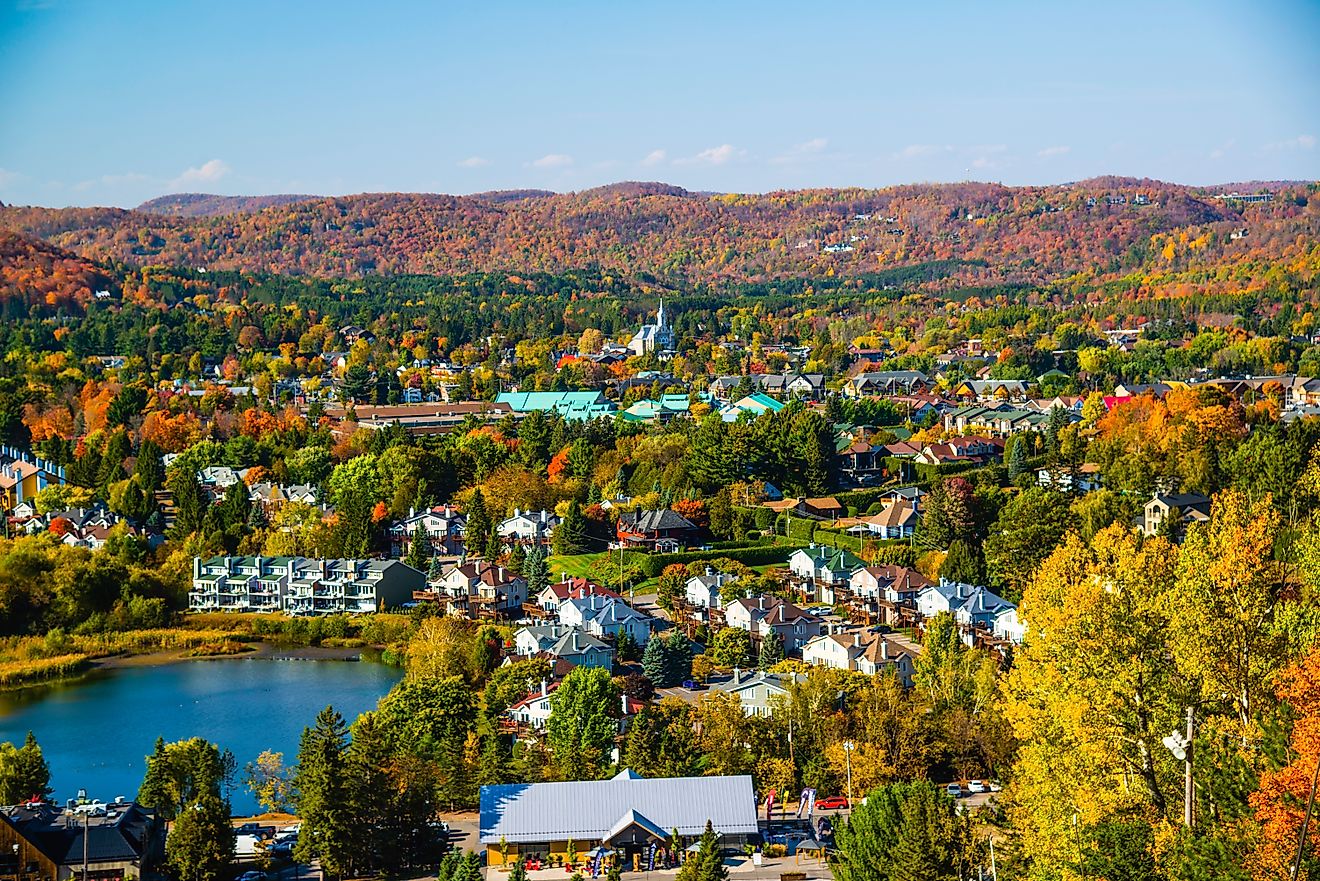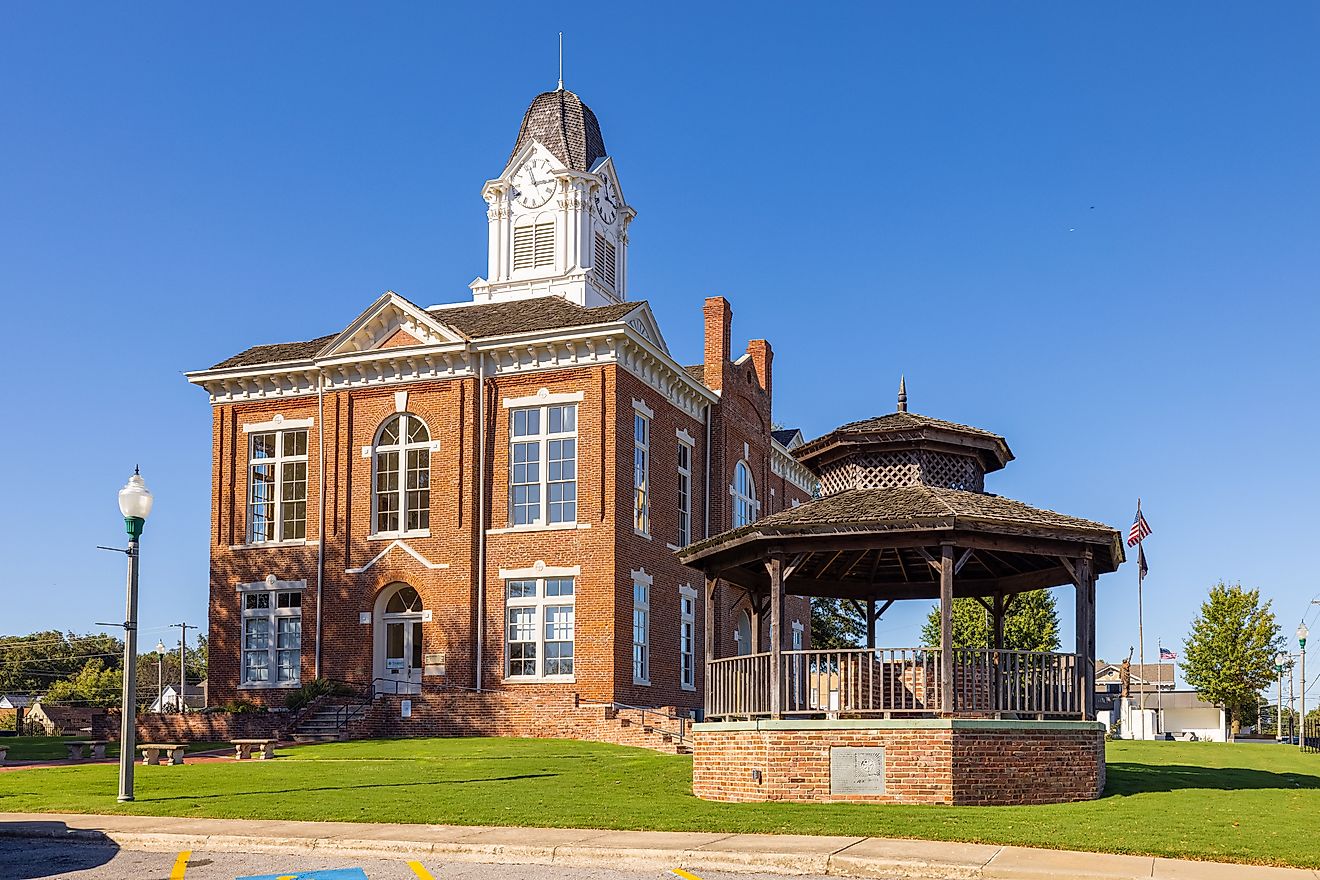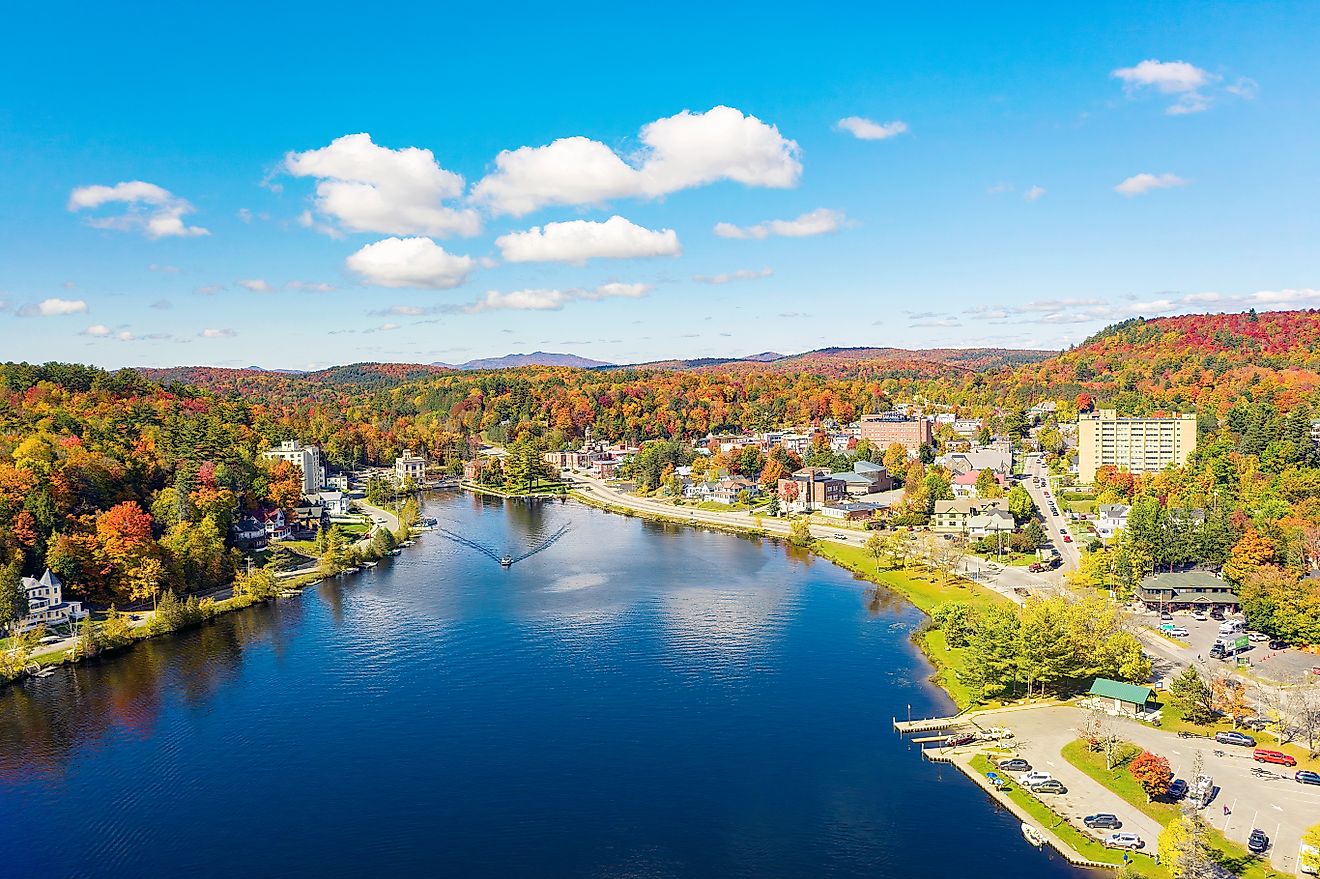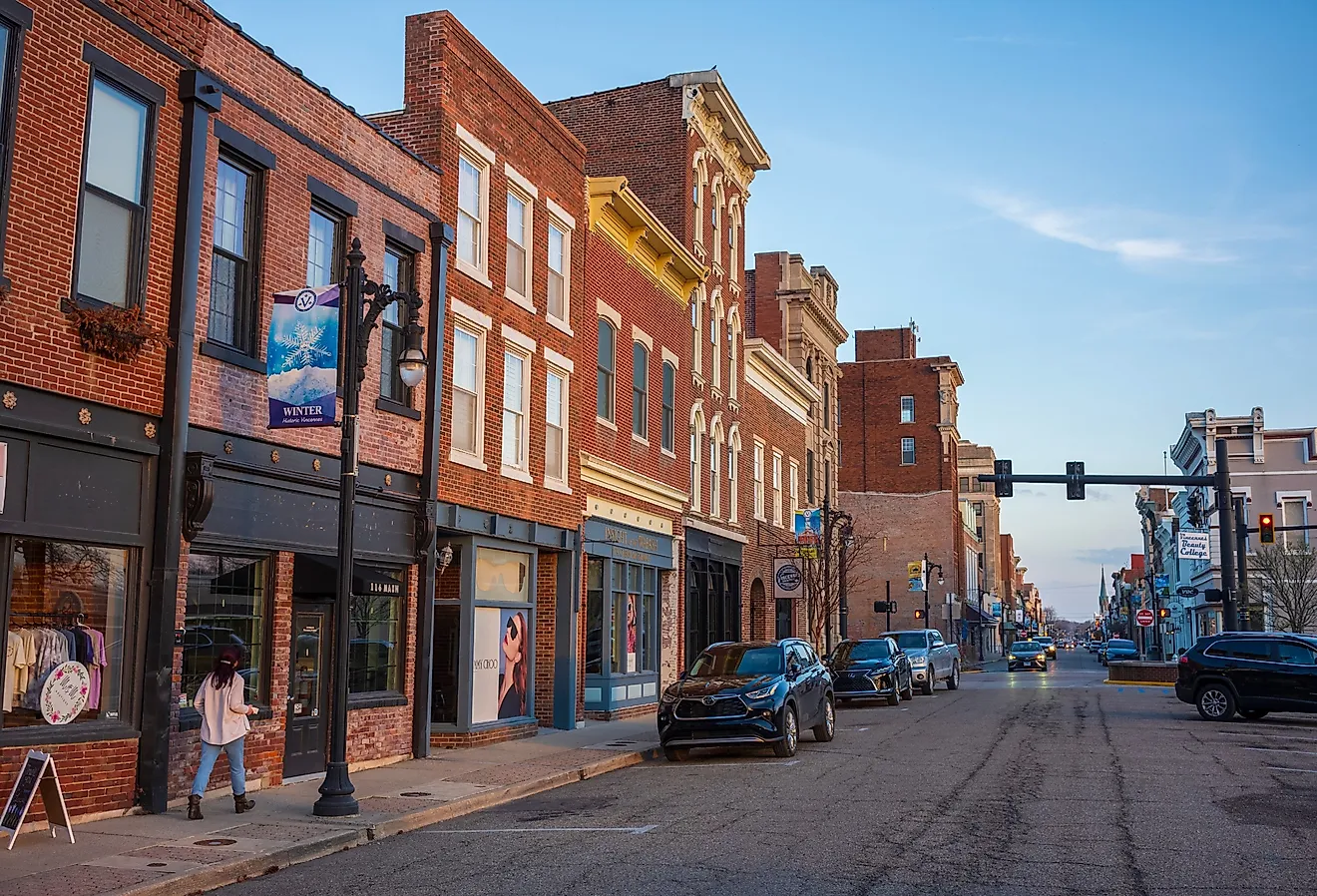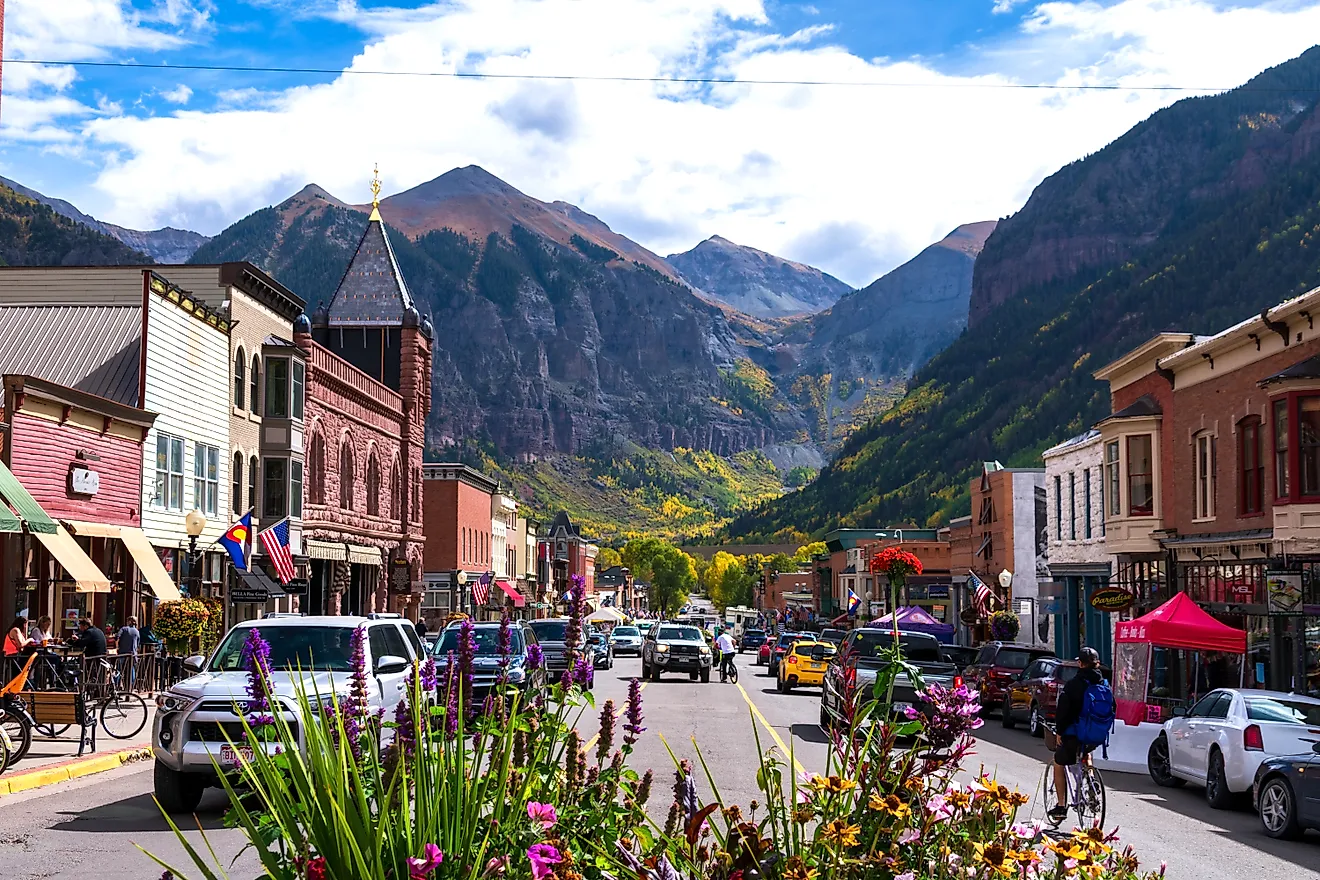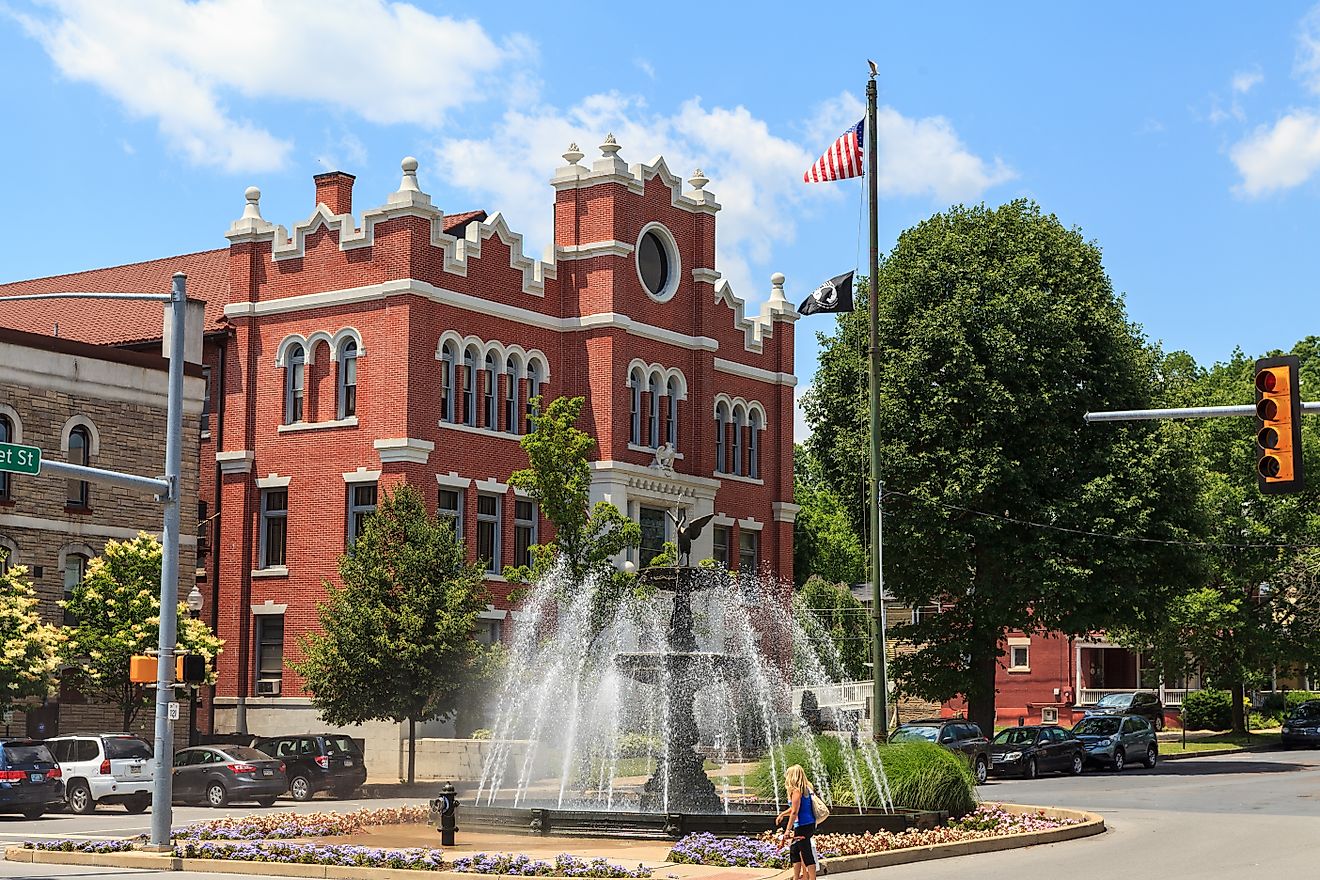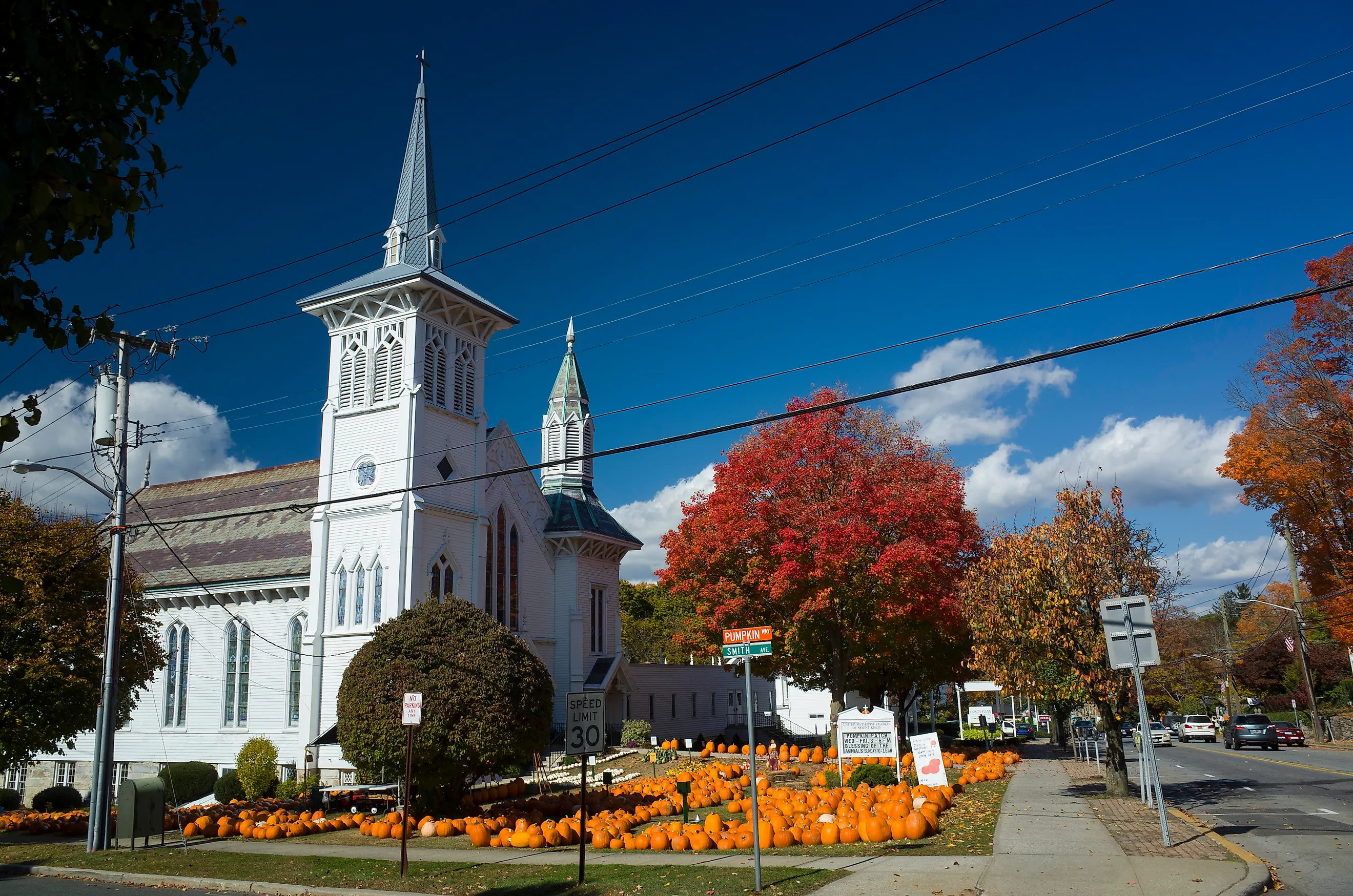
7 Most Beautiful Gothic Churches In New York
The Empire State is home to some of the most remarkable examples of Gothic church architecture in the United States. From the soaring spires of Manhattan to the sandstone façades of upstate cathedrals, these buildings open a window to both the religious communities and artistic craftsmanship of the 19th century and beyond. Many even remain active places of worship, while others now thrive by inviting visitors to explore their intricate stonework, stained glass, and overall historical legacies. Here are 7 of the most beautiful of these places of worship you can check out today.
Trinity Church, Manhattan
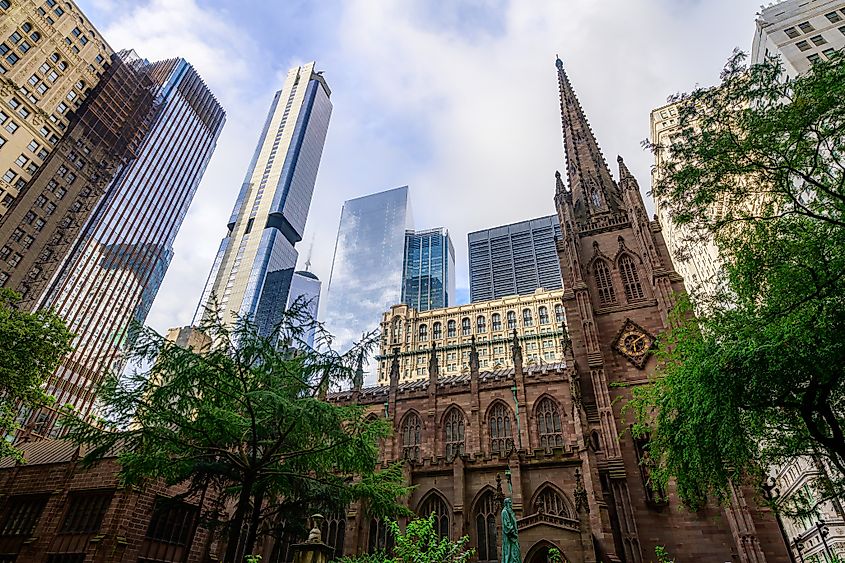
Trinity Church, located at the intersection of Wall Street and Broadway in Lower Manhattan, is one of New York City’s most historically significant Gothic Revival churches. Its current form, built in 1846 and designed by architect Richard Upjohn, is recognized for its arches, countless vaults, and towering spires, which at the time made it the tallest building in the city!
Trinity Church has since played a key role in the city’s religious and civic life, surviving fires, economic upheavals, and the September 11 attacks nearby. The churchyard also serves as the resting place for notable figures, including Alexander Hamilton, reflecting its deep historical connections to the earliest days of the United States.
Today, Trinity Church remains active and open to the public. You can still attend regular services, explore the ornate interior (with its detailed woodwork and stained-glass windows), or walk the churchyard to read up on former attendants. Guided tours are also sometimes available, offering expert insight into its architecture, overall role in the community, and deep-seated place in Manhattan's longstanding history.
United Methodist Church, Mount Kisco
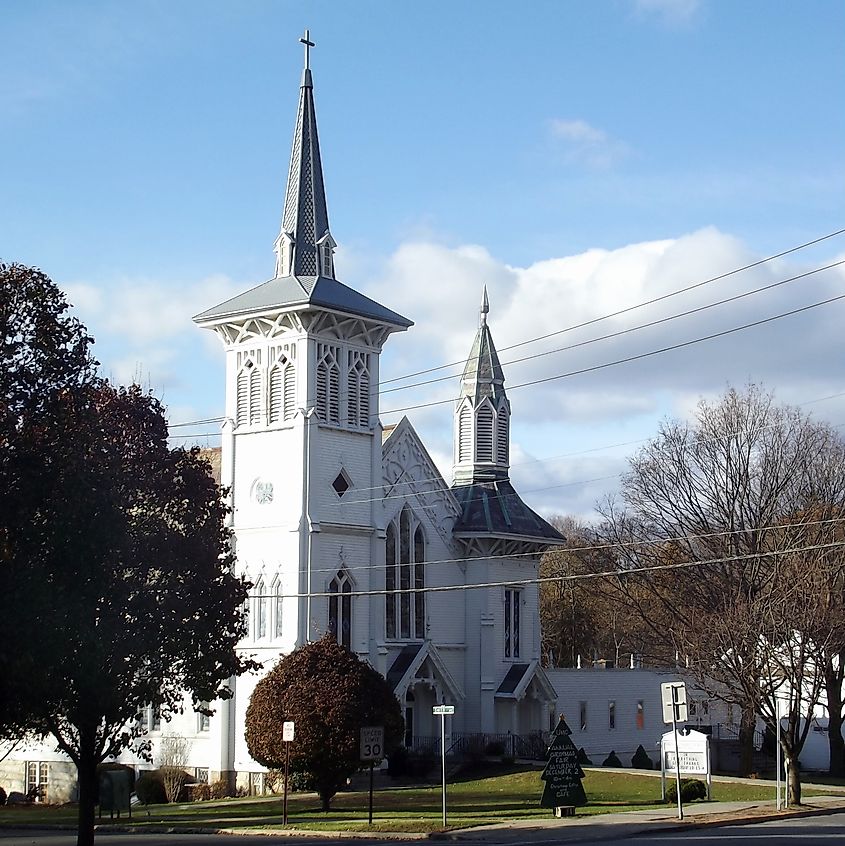
The United Methodist Church and Parsonage of Mount Kisco represent a fine example of late 19th-century Carpenter Gothic architecture in New York’s already scenic Hudson Valley. With the main structure and its adjacent parsonage completed in 1871, the church has long been a vital part of life for residents of the area.
Featuring pointed-arch windows, steeply pitched gables, and buttressed stone walls that mirror the English parish-inspired style popular during the Victorian era, this is a perfect example of a small town church that you ought to check out if passing by.
Listed on the National Register of Historic Places, it remains an active part of the Mount Kisco community, hosting Sunday services and having grounds usually open to the public, should you simply wish to admire the exterior craftsmanship that has been carefully maintained for over 150 years. Furthermore, periodic open houses and events also welcome guests to explore the sanctuary, allowing for a close look at this enduring symbol of Gothic religious design in upstate New York.
Cathedral Of The Immaculate Conception, Albany

The Cathedral of the Immaculate Conception in Albany beautifully complements the skyline of New York's capital city. When it opened in 1852, it marked the establishment of Albany as the center of a newly formed Catholic diocese. Architect Patrick Keely, who designed hundreds of Catholic churches across the Northeast, used local red brick and brownstone to achieve a restrained but commanding Gothic form. It quickly became a focal point for immigrant communities arriving in Albany during the mid-1800s, serving as both a place of worship and a social hub.
Inside, stained-glass windows imported from France cast colored light across ribbed vaults and carved altars, many of which were restored much more recently in the early 2000s. It is also open for daily mass, the occasional guided tours, or if you want, you are free to step inside just to experience its historic interior up close.
Marble Collegiate Church, Manhattan
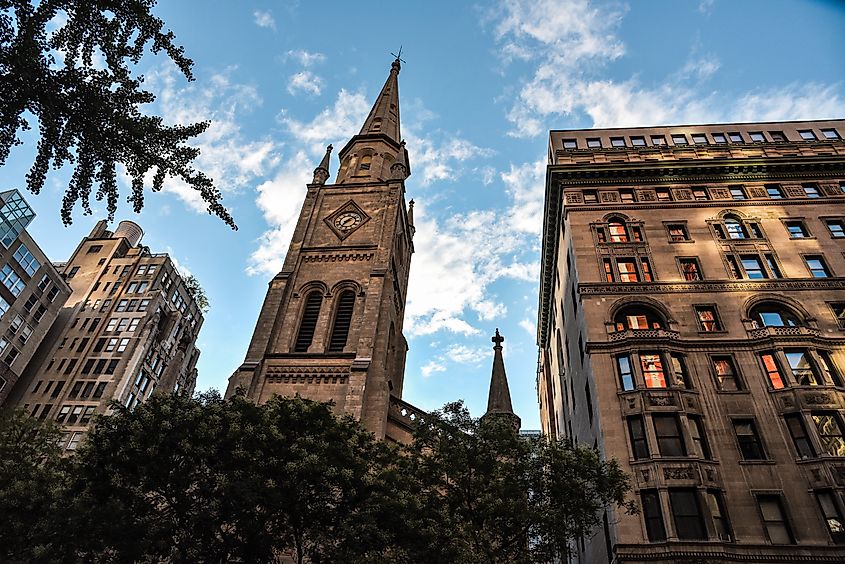
Marble Collegiate Church in Manhattan is one of New York’s oldest continuously operating Protestant congregations and a landmark of what is sometimes called "Collegiate Gothic" architecture. Completed in 1854 and designed by architect Samuel A. Warner, the church was built for the Collegiate Reformed Dutch Church, whose roots date back to 1628. Its limestone façade, abundant arches, and intricate tracery offer a window into the strong influence of English design in the early years of the country while maintaining the restraint typical of mid-19th-century American ecclesiastical buildings.
Located at Fifth Avenue and 29th Street, Marble Collegiate gained national recognition under the ministry of Norman Vincent Peale, author of The Power of Positive Thinking. It still remains quite active these days, hosting regular worship services, concerts, and community events. The public is also welcome to tour the sanctuary, attend services, or appreciate the building's details from the street, making it an ideal stop during a stroll in Midtown.
St. Mary's Episcopal Church, Brooklyn
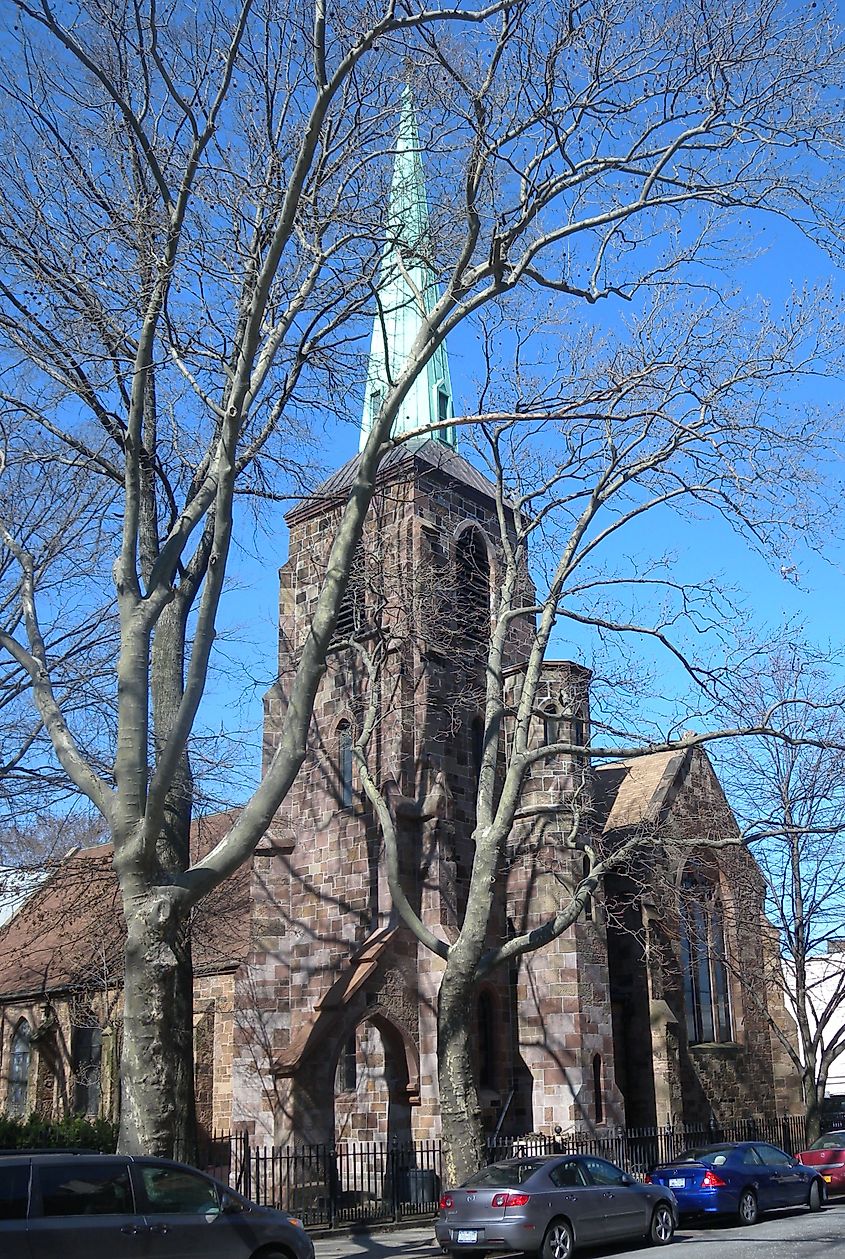
St. Mary’s Episcopal Church in Brooklyn, located more specifically in the Clinton Hill neighborhood, is a nice example of a smaller-scale church in the otherwise bustling New York City. Finished in 1859, it has many characteristic Gothic features of the period, lancet windows, buttresses, and a steeply pitched roof rendered in the same brownstone that is found all across the city.
Over the years, St. Mary’s has remained a center for worship and community service in Brooklyn’s evolving cultural landscape. The church is still active, offering regular Episcopal services, concerts, and outreach programs for all who come. And, like most on this list, Sunday worship is still ongoing, but you are also open to simply view the building’s craftsmanship from the quiet, tree-lined sidewalks of Classon Avenue.
St. Paul's Cathedral, Buffalo
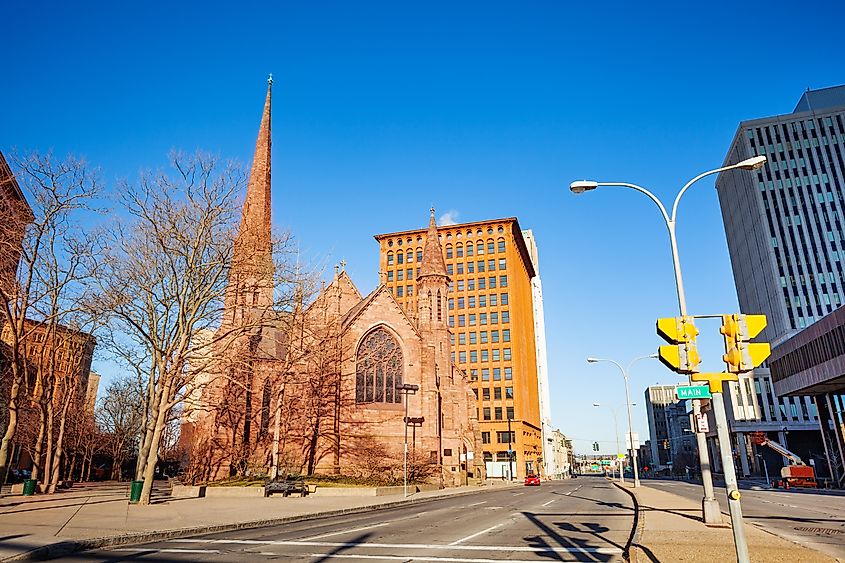
St. Paul’s Cathedral in Buffalo stands among the city's most defining landmarks and is a masterwork of early Gothic Revival design. Completed in 1851, it was the first major commission of architect Richard Upjohn, who would later design Trinity Church in Manhattan.
Built of locally quarried Medina sandstone, the cathedral’s pointed arches, tall lancet windows, and twin towers give an emphasis on its more vertical features, ones that contrasted sharply with the surrounding 19th-century streetscape. Note that St. Paul’s had also survived a devastating fire in 1888, but the stone exterior remained intact, and the interior was meticulously restored.
The cathedral played a significant role in Buffalo’s rise as a regional industrial and cultural center, hosting community gatherings and diocesan events for more than 170 years. It remains active today as the seat of the Episcopal Diocese of Western New York, open to the public for worship, concerts, and guided architectural tours.
St. Patrick's Cathedral, Manhattan
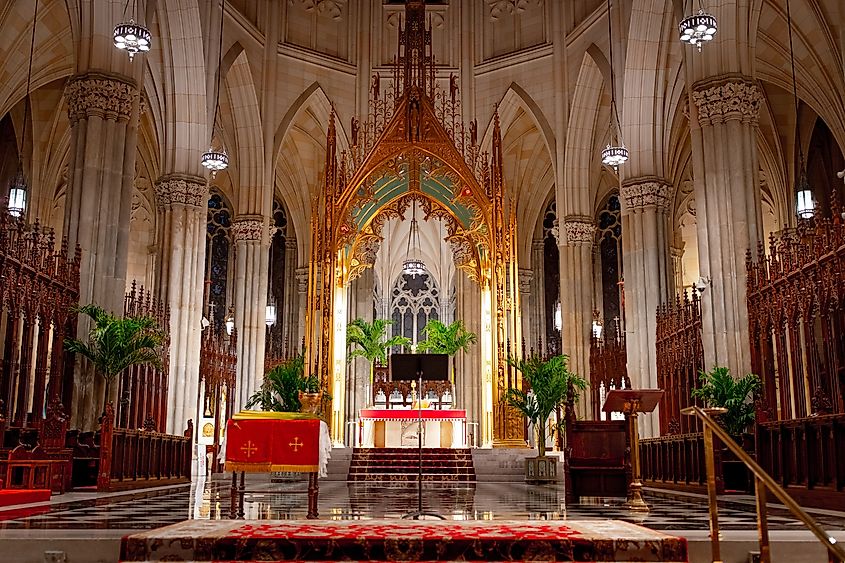
St. Patrick’s Cathedral is perhaps the most recognizable example of Gothic Revival architecture in the United States. Construction began in 1858 under the direction of Archbishop John Hughes and architect James Renwick Jr., though it was interrupted by the Civil War, and was eventually completed in 1878.
Built of eye-catching white marble, the cathedral’s ribbed vaults and twin spires, rising 330 feet above Fifth Avenue, embody the grandeur of European Gothic style translated into the modern cityscape. Inside, you'll be surrounded by elaborate stained-glass windows, carved altars, and the "Great Organ," which features more than 7,800 pipes.
The cathedral serves as the seat of the Roman Catholic Archdiocese of New York and has hosted major religious events, papal visits, and state funerals. With that, St. Patrick’s remains open daily for worship, private visits, and even the occasional guided tours, allowing the public to experience one of New York City's most historically and architecturally significant sacred spaces.
New York, A True Destination For Fans of Gothic Architecture
These fine examples of Gothic churches of New York continue to link past and present through their enduring craftsmanship and community presence. Whether standing amid Manhattan’s concrete jungle or along quieter upstate streets, each destination above reveals a chapter of the state’s architectural and spiritual history. Visiting them today will give you a direct connection to the artistry and conviction that shaped New York’s cultural identity over the centuries, even before the founding of the country.
